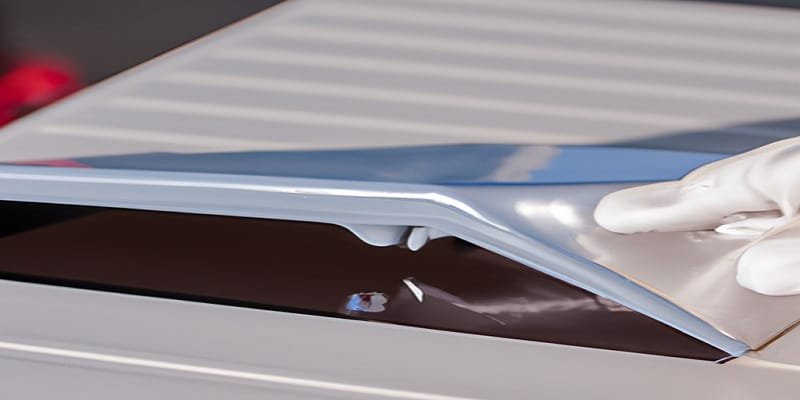Yes, valve covers can be powder coated, providing a durable and aesthetic finish for your engine component. Powder coating valve covers offers a wide range of color options and improves corrosion resistance, heat resistance, and durability.
Valve covers play a crucial role in protecting the valves and camshafts within an engine. They are typically made from aluminum or cast iron. While many valve covers come in standard finishes, such as chrome or polished aluminum, powder coating provides an alternative option that can really make your engine pop.
With powder coating, you can get creative with colors and effects to customize the look of your valve covers. And it offers increased durability compared to paint. If you want to spice up your engine with unique, durable valve covers, powder coating is the way to go. In this article, we’ll walk through everything you need to know about powder coating valve covers.
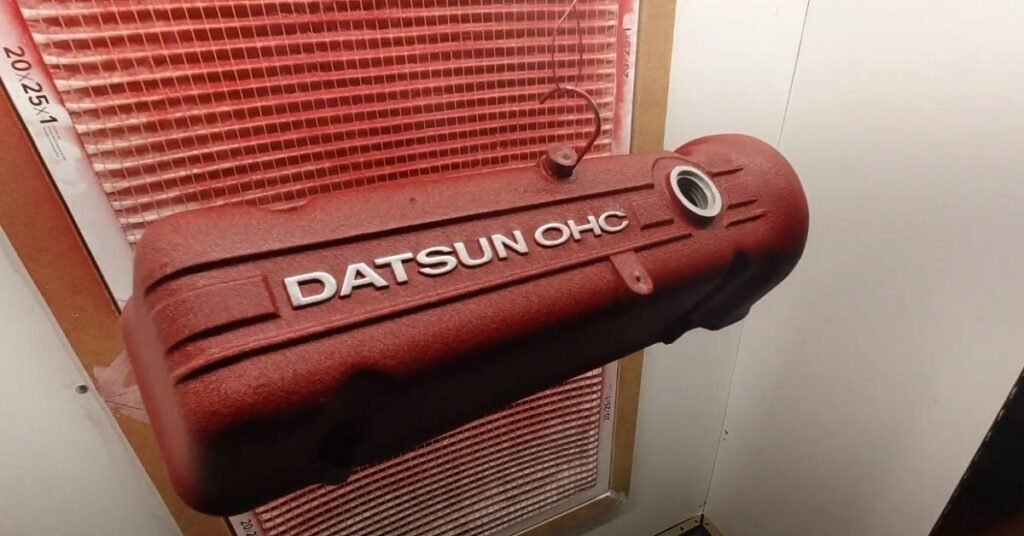
Selecting The Right Valve Covers For Powder Coating
When it comes to giving your engine a fresh and stylish look, powder coating the valve covers is a fantastic option. Powder coating not only enhances the appearance of the covers but also provides them with a durable and long-lasting finish. However, not all valve covers are suitable for powder coating. In this guide, we will explore the different types of valve covers that are suitable for powder coating and the considerations to keep in mind while selecting the right covers.
Types Of Valve Covers Suitable For Powder Coating
If you are considering powder coating your valve covers, it is essential to choose covers that are compatible with the process. Here are some types of valve covers that are suitable for powder coating:
Aluminum valve covers: Aluminum covers are a popular choice due to their lightweight and corrosion-resistant properties. They are an excellent option for powder coating as the material allows for a smooth and even application of the powder.
Read More: Can You Powder coat Aluminum?
Steel valve covers: Steel covers are another viable option for powder coating. They are known for their durability and sturdy construction, making them perfect for withstanding the powder coating process.
Cast iron valve covers: While cast iron covers can also be powder coated, it is important to note that they require additional preparation to ensure proper adhesion of the powder coating. Thorough cleaning and proper surface treatment are essential for achieving satisfactory results.
Read Also: Can You powder coat Cast Iron?
Considerations For Choosing Valve Covers For Powder Coating
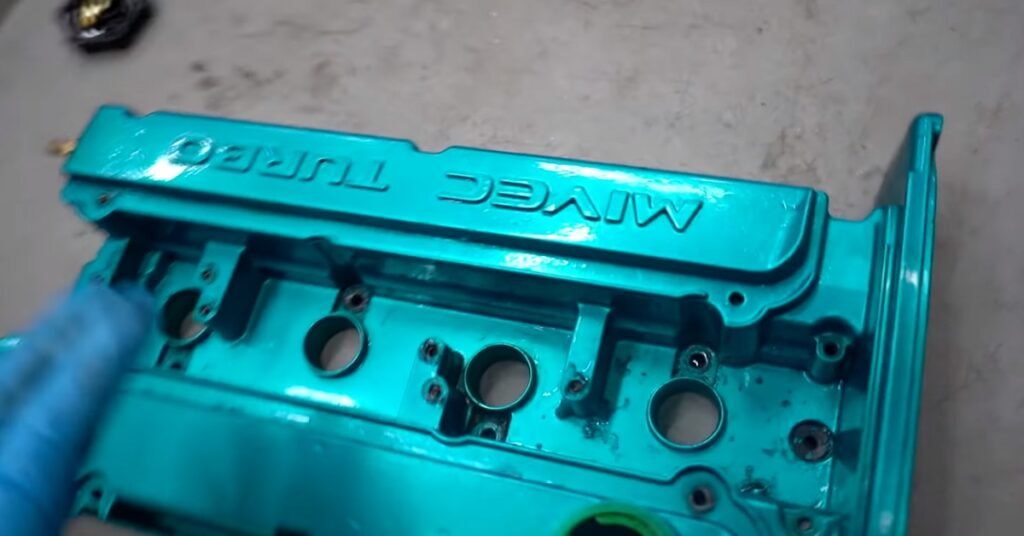
When selecting valve covers for powder coating, there are a few factors to consider. These considerations can help ensure optimal results and a seamless powder coating application:
Compatibility: Ensure that the materials of the valve covers are suitable for powder coating. Aluminum and steel are typically the best options, while cast iron covers require extra attention during the preparation stage.
Design: Consider the design and shape of the covers. Complex designs with intricate details may require extra care during the powder coating process to ensure an even and smooth finish.
Condition: Examine the condition of the valve covers before powder coating. Surface imperfections such as dents, scratches, or rust can affect the appearance and durability of the powder coating. Proper preparation, including sanding and repairing any damage, is crucial for optimal results.
Budget: Factor in your budget when choosing valve covers, as different materials and designs can vary in cost. Determine the overall investment you are willing to make to achieve the desired look for your engine.
Preparing Valve Covers For Powder Coating
Properly preparing the valve covers before powder coating is vital to ensure a successful and long-lasting finish. Here are some steps to follow:
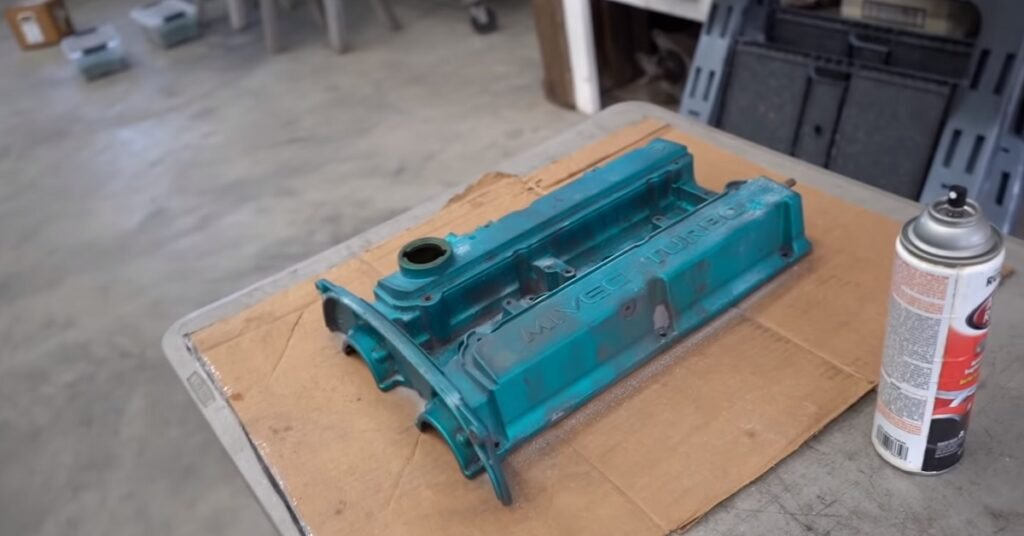
Cleaning: Thoroughly clean the valve covers to remove any dirt, grease, or debris. This can be done using a degreaser and a scrub brush. Ensure that the covers are completely dry before proceeding to the next step.
Surface treatment: Depending on the material of the valve covers, different surface treatments may be required. For aluminum and steel covers, sandblasting or chemical etching can help create a rough surface that promotes better adhesion of the powder coating. Cast iron covers may require additional steps such as acid-etching or the use of an adhesion promoter.
Masking: If there are any areas that you want to protect from the powder coating, such as gasket surfaces or specific designs, apply masking tape or high-temperature silicone plugs to cover those areas.
Baking: Once the valve covers are properly prepared, they are ready for the powder coating process. Follow the instructions provided by the powder coating manufacturer for the correct temperature and baking time.
By selecting the right valve covers and ensuring proper preparation, you can achieve stunning results when powder coating your valve covers. Whether you opt for aluminum, steel, or cast iron covers, powder coating can transform the appearance of your engine while providing lasting protection.
The Powder Coating Process For Valve Covers
Are you thinking about powder coating your valve covers? Powder coating is a popular option for enhancing the appearance and durability of various metal products, including valve covers. In this article, we will walk you through the process of powder coating valve covers, from surface preparation to curing and finishing.
Surface Preparation For Powder Coating
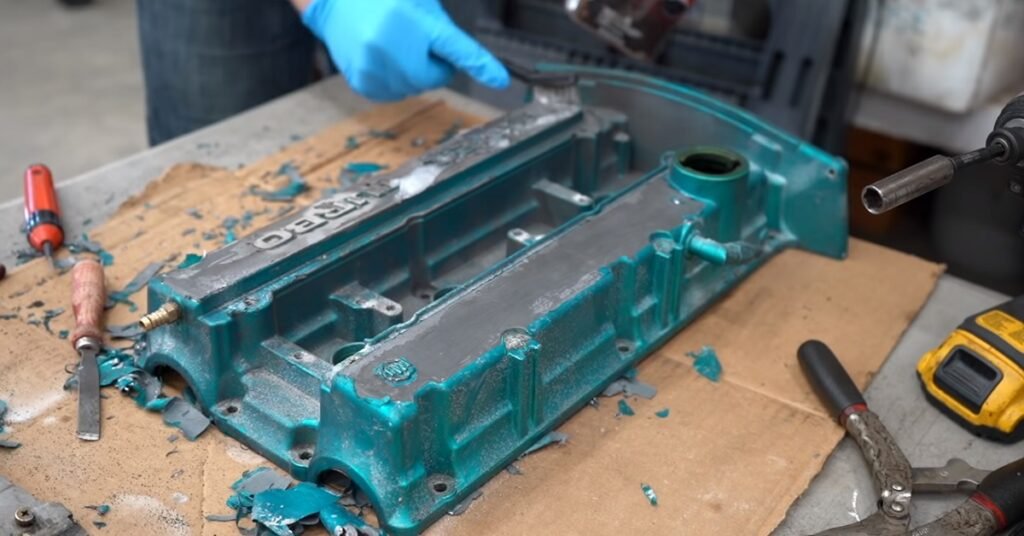
Prior to powder coating your valve covers, the surface must be properly prepared to ensure a strong and long-lasting bond between the powder and the metal. This involves several essential steps:
Cleaning: Start by thoroughly cleaning the valve covers to remove any dirt, grease, or contaminants that might hinder the adherence of the powder. This can be done using a mild detergent or a specialized degreaser.
Surface Roughening: After cleaning, it is important to roughen the surface of the valve covers to promote better adhesion. This can be achieved by sandblasting, abrasive blasting, or chemical etching.
Masking: If there are any areas you don’t want to be coated, such as gasket surfaces or machined areas, they need to be masked off using high-temperature masking tape or silicone plugs. This ensures that only the desired areas receive the powder coat.
Applying The Powder Coating
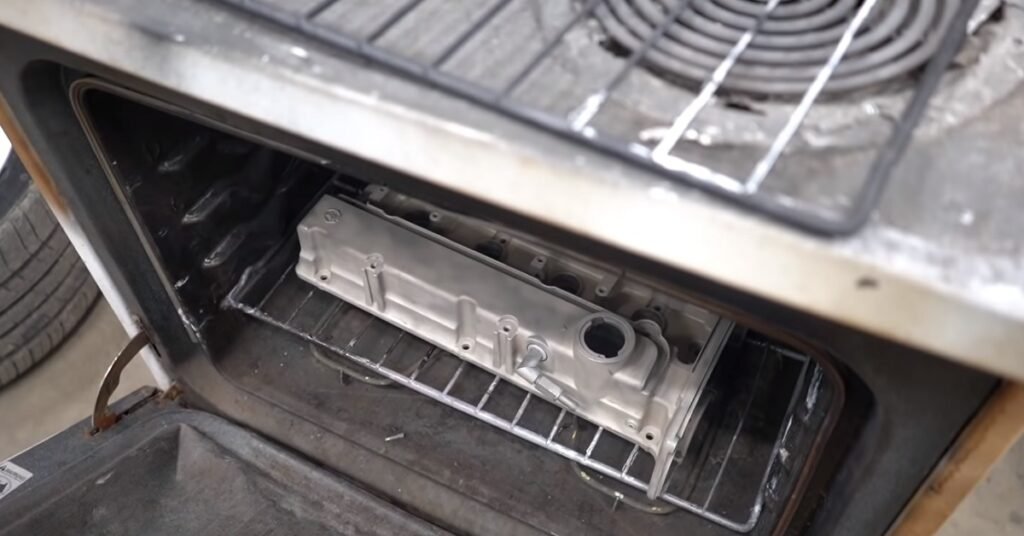
Once the valve covers are properly prepared, it’s time to apply the powder coating. The process typically involves the following steps:
Electrostatic Application: The powder coating is applied using a specialized electrostatic spray gun. The gun imparts an electrical charge to the powder particles, causing them to be attracted to the grounded valve covers.
Uniform Coating: The powder is evenly sprayed onto the valve covers, ensuring a uniform coating thickness. This helps to achieve a smooth and aesthetically pleasing finish.
Extra Attention to Details: It’s important to pay close attention to the crevices and hard-to-reach areas to ensure complete coverage. This can be done by adjusting the spray gun settings and utilizing proper spraying techniques.

Curing And Finishing The Powder Coating
After the powder coating has been applied, the valve covers need to undergo a curing process to achieve their full durability and hardness:
Heat Curing: The valve covers are placed in a curing oven and exposed to high temperatures. This causes the powder particles to melt and flow, forming a smooth and durable coating. The curing temperature and time will depend on the specific powder coating used.
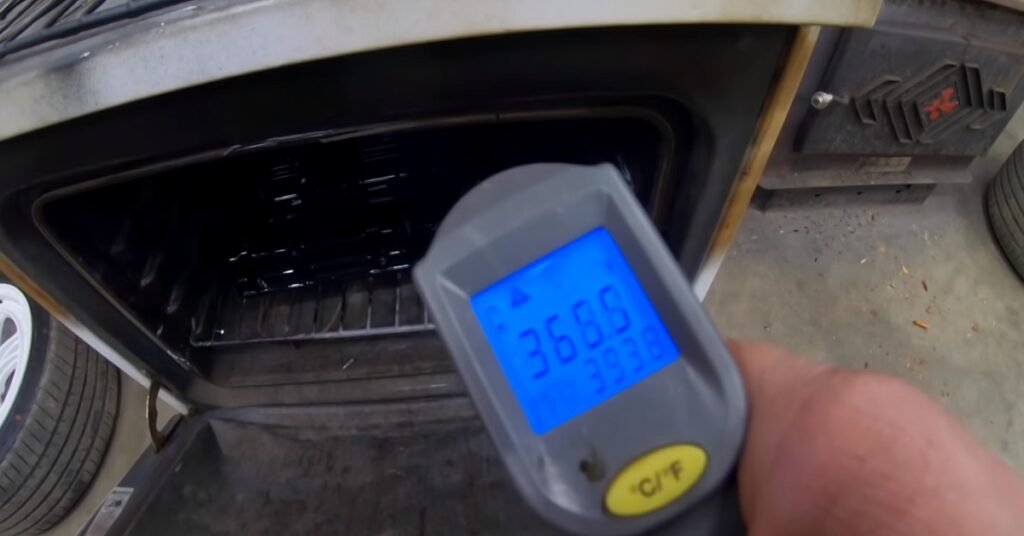
Cooling: Once the curing process is complete, the valve covers are carefully cooled down to room temperature. This allows the coating to harden and settle, ensuring maximum durability.
Finishing Touches: Finally, any necessary touch-ups or finishing touches can be applied, such as polishing or buffing, to achieve the desired appearance of the valve covers.
By following these steps, you can successfully powder coat your valve covers, enhancing their aesthetic appeal and protecting them from corrosion and wear. Powder coating provides a durable and long-lasting finish that can withstand the demanding conditions of engines and automotive applications.
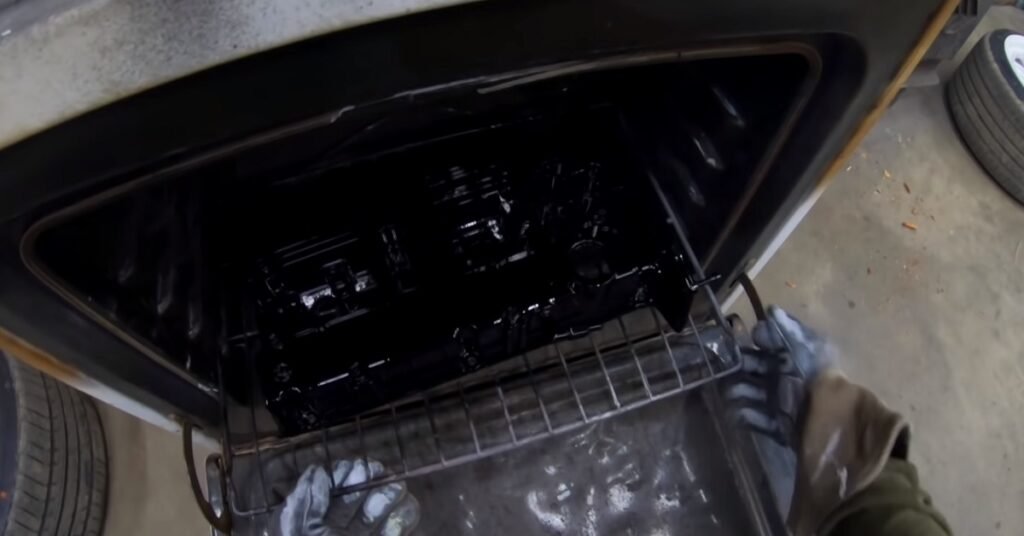
Benefits Of Powder Coating Valve Covers
When it comes to enhancing the performance and appearance of your vehicle’s engine, powder coating your valve covers can be a game-changer. Powder coating is a versatile and durable paint alternative that offers numerous benefits for valve covers. In this article, we will explore the advantages of powder coating valve covers and why it is a popular choice among automotive enthusiasts.
Enhanced Durability And Protection
Powder coating provides a robust and long-lasting protective finish for valve covers. The process involves electrostatically applying a dry powder on the surface of the valve cover, which is then cured under high heat to form a hard and durable coating. This coating acts as a shield, protecting the valve covers from scratches, chips, corrosion, and other forms of damage that may occur under normal engine conditions.
Unlike traditional liquid paints that can easily chip or peel over time, powder coating adheres more effectively to the metal surface, offering superior resistance to impact and abrasion. This means your valve covers will remain in pristine condition for an extended period, ensuring consistent performance and a polished look.
Improved Aesthetics And Customization Options
One of the biggest advantages of powder coating valve covers is the ability to achieve a stunning and professional finish. With an array of colors, textures, and finishes available, powder coating allows you to customize the look of your valve covers to match your personal style or the overall theme of your vehicle.
Whether you prefer a glossy, metallic, or matte appearance, powder coating delivers a consistent and uniform finish. It can even emulate the look of more expensive materials such as chrome or carbon fiber, saving you money without compromising on style.
Heat Resistance And Thermal Insulation Properties
Valve covers are exposed to high temperatures in the engine bay, which can potentially affect their performance and longevity. Powder coating offers excellent heat resistance, making it an ideal choice for valve covers.
The powder coating process involves a curing phase at high temperatures, which enhances the coating’s ability to withstand extreme heat. This means that even under intense engine conditions, the powder-coated valve covers will not discolor, peel, or lose their protective properties.
Furthermore, powder coating provides thermal insulation properties, helping to reduce heat transfer from the engine to the valve covers. This can contribute to better engine performance and overall temperature management, ensuring optimal functioning of the valve components.
Overall, powder coating valve covers offers a range of benefits, including enhanced durability and protection, improved aesthetics, and customization options, as well as heat resistance and thermal insulation properties. By opting for powder coating, you can not only protect your valve covers but also enhance the overall appearance of your engine bay, making it a worthwhile investment for any automotive enthusiast.
Considerations And Guidelines For Powder Coating Valve Covers
When it comes to enhancing the appearance of your engine, powder coating valve covers provides a durable and attractive option. The powder coating process involves electrostatically applying powdered paint to the surface of the valve covers, creating a smooth and long-lasting finish.
Before diving into the process, it is important to consider a few guidelines to ensure the best results. In this section, we will discuss the maintenance and care for powder coated valve covers, potential issues and troubleshooting, and precautions to take during the powder coating process.
Maintenance And Care For Powder Coated Valve Covers
Once your valve covers have been powder coated, proper maintenance and care are crucial to preserve their appearance and durability. Here are some important maintenance tips to keep in mind:
Regular cleaning: Regularly clean your powder coated valve covers with a mild soap or a non-abrasive cleaner to remove dirt, grease, and other contaminants.
Avoid abrasive materials: When cleaning, use soft materials like microfiber cloths or sponges to prevent scratching or damaging the powder coating.
Protect from chemicals: Avoid exposing your valve covers to harsh chemicals such as solvents, acids, or gasoline, as they can deteriorate the powder coating.
Inspect for damage: Periodically inspect your valve covers for any signs of chipping, cracking, or peeling. If any damage is detected, it should be repaired promptly to prevent further deterioration.
Reapply clear coat: Over time, the clear coat protecting the powder coating may wear off. It is recommended to reapply a clear coat every few years to maintain the appearance and protection of the powder coat.
Potential Issues And Troubleshooting
While powder coating valve covers is generally a reliable process, there are potential issues that may arise. Here are some common problems and troubleshooting tips:
Adhesion issues: If the powder coating does not adhere properly to the surface of the valve cover, it may result in uneven coating or peeling. This can be caused by insufficient surface preparation, improper powder application, or inadequate curing. To avoid this, ensure thorough cleaning and preparation of the valve covers, follow the manufacturer’s guidelines for powder application, and properly cure the coating according to the recommended temperature and duration.
Color fading or discoloration: Over time, exposure to UV rays and extremes of temperature may cause the powder coating to fade or change color. This is more likely to occur with certain colors, such as red or yellow. To minimize color fading, choose a high-quality powder coating that is resistant to UV radiation and follow proper maintenance practices.
Scratches or surface imperfections: While powder coating is generally durable, it is not completely resistant to scratches or impacts. Avoid using abrasive materials or tools that may scratch the surface. For minor scratches or imperfections, touch-up kits or clear coat applications can help blend or repair the damaged areas.
Peeling or bubbling: If the powder coating starts to peel or bubble, it is usually due to improper surface preparation, inadequate curing, or poor bonding. To prevent this, ensure proper cleaning and preparation of the valve covers, adhere to recommended curing processes, and follow the manufacturer’s guidelines for powder application.
Precautions To Take During The Powder Coating Process
Before starting the powder coating process for your valve covers, there are several precautions to keep in mind:
Proper ventilation: Ensure that the powder coating process is done in a well-ventilated area or with proper exhaust systems in place to remove any potentially harmful fumes.
Surface preparation: Thoroughly clean and prepare the valve covers by removing any existing paint, rust, or contaminants. Sandblasting or chemical stripping is commonly used to achieve a clean and smooth surface.
Masking: To prevent powder coating in areas where you don’t want it, use masking tapes or high-temperature silicone plugs to cover sensitive areas such as threaded holes or gasket surfaces.
Proper grounding: Ensure that both the valve covers and the powder coating system are properly grounded to facilitate the electrostatic attraction of the powder particles and ensure an even coating.
Uniform application: Apply the powder coating in multiple light coats to achieve a smooth and even finish. Avoid excessive powder buildup, which may result in drips, runs, or uneven coating.
Curing process: Follow the manufacturer’s recommended curing process, including the correct temperature and duration. Improper curing can lead to adhesion issues or premature degradation of the powder coating.
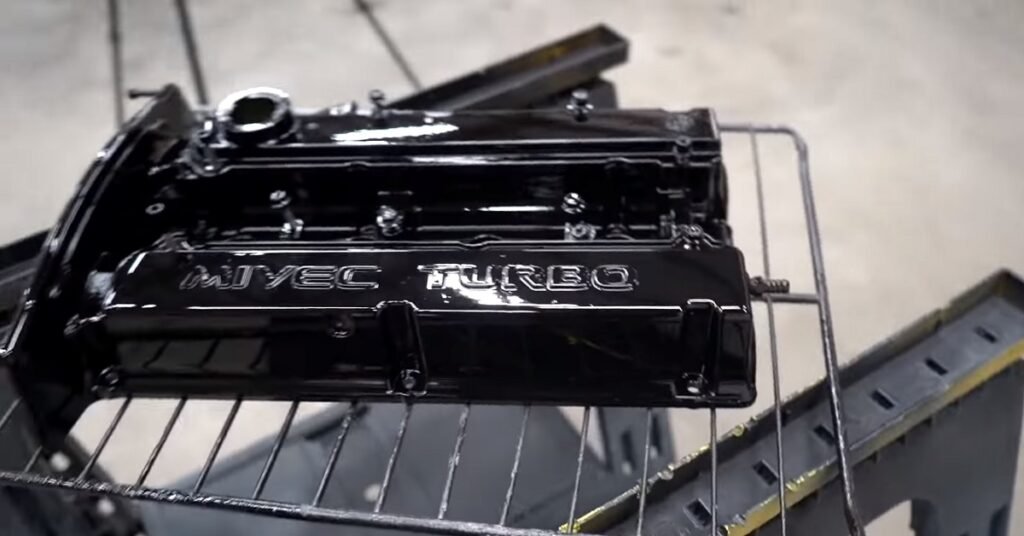
Frequently Asked Questions For Can You Powder Coat Valve Covers?
How Much Does It Cost To Powder Coat Valve Covers?
Powder coating valve covers typically costs between $50 to $200 depending on factors such as the size and complexity of the covers, choice of color, and additional customization options.
Can Powder Coat Withstand Exhaust Heat?
Powder coat can withstand exhaust heat effectively due to its high temperature resistance. It offers durable protection and does not chip or fade easily under extreme heat conditions. It is a reliable choice for exhaust systems.
Can You Powder Coat Magnesium Valve Covers?
Yes, magnesium valve covers can be powder coated, but it requires special preparation and techniques. Magnesium is a reactive metal and prone to oxidization, so the surface needs to be properly cleaned and etched first. Then a chromate conversion coating should be applied to protect the magnesium. With proper pretreatment, powder coating can provide magnesium valve covers with an attractive protective finish. But the process requires care to account for magnesium’s unique properties.
Read More In-Depth Guide About: Can You Powder Coat Magnesium?
Can You Powder Coat Aluminum Valve Cover?
Yes, you can powder coat an aluminum valve cover. Powder coating is a durable finish that can be applied to aluminum surfaces, providing protection and enhancing appearance. It is a popular choice for valve covers due to its resistance to chipping, scratching, and corrosion.
Final Thoughts
Powder coating valve covers can offer multiple benefits, making them a popular choice among automotive enthusiasts. With its ability to provide a durable and stylish finish, powder coating can transform valve covers, enhancing their appearance and protecting them from rust and corrosion.
It also allows for customization, giving vehicle owners the option to choose from a wide range of colors and finishes. So, if you’re looking to upgrade your valve covers, powder coating is definitely worth considering for a long-lasting and eye-catching result.

